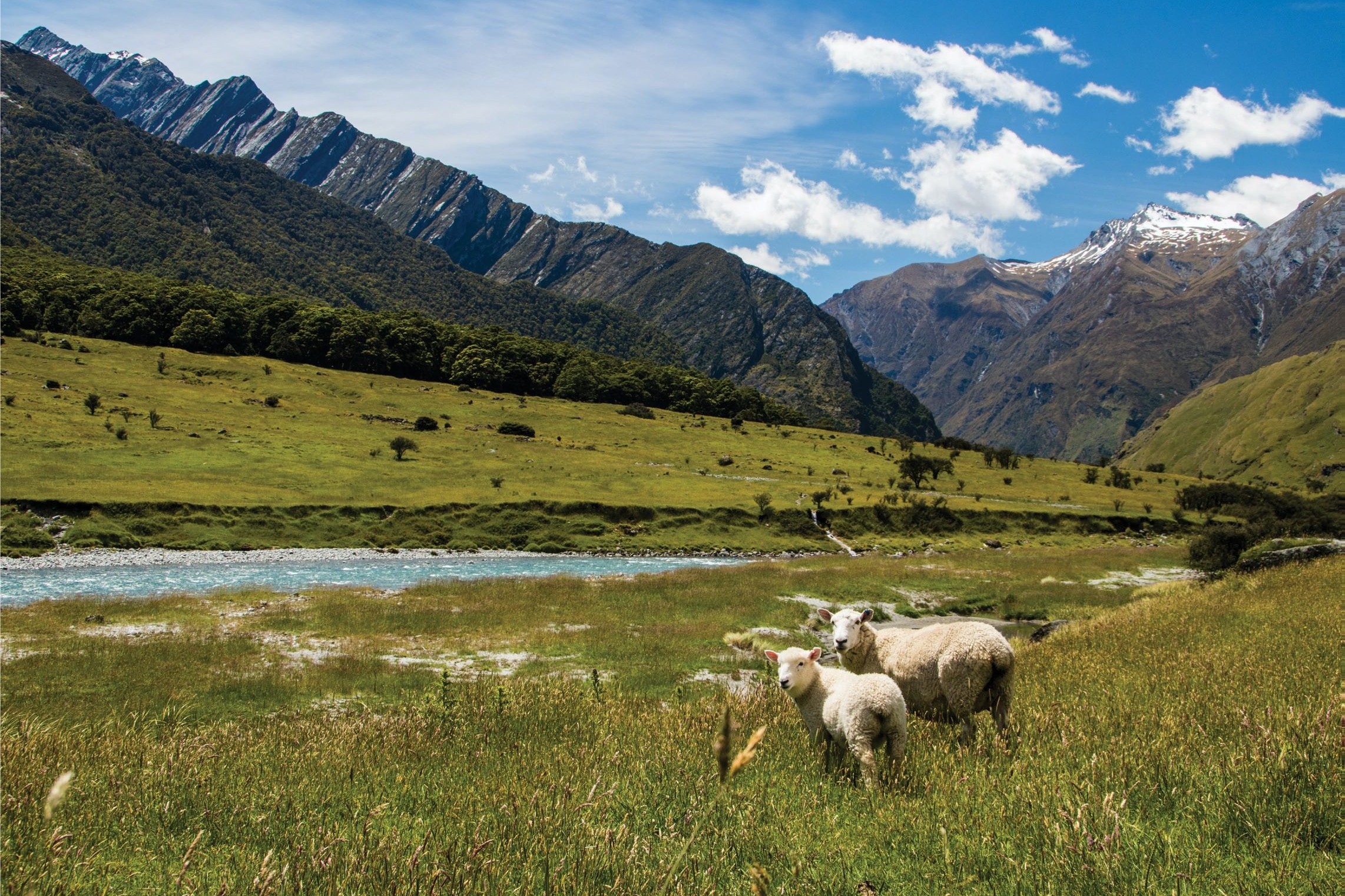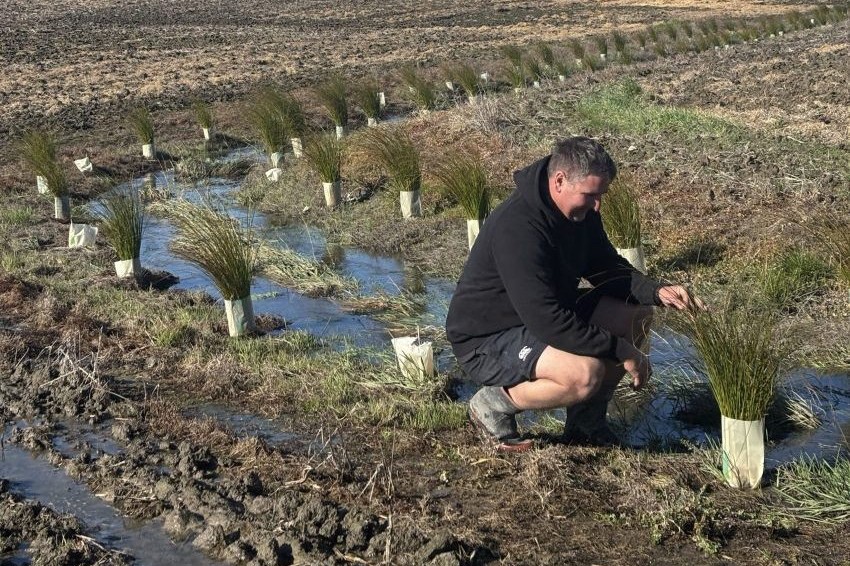No matter what some segments of society might wish for, pastoral farming in this country is not going away any time soon. Just ask movie director James Cameron, his grand ambitions of converting two Wairarapa dairy farms into organic vegetable production have quietly faded away. Grazing livestock have now returned to the land, along with a healthy dose of economic realism. Pastoral farming is the most productive and efficient use of land for large swaths of this country. That said, there are major challenges ahead for many farmers, particularly those on more marginal land.
What concerns me most about the Climate Change Commission’s plan to curb emissions is the farmers that have the least negative impact on climate are the ones that will pay the highest price. Hill country farmers are expected to lose another 700,000 hectares to exotic and native forestry in the coming decade. Some of this change will make good environmental sense, allowing steep and erosion prone land that never should have been converted to pasture in the first place to revert. But much of this change will see good productive farmland lost forever. Jobs will be lost, rural communities broken up. This does not have to be the future.
Vision, tenacity needed
B+LNZ have the resources and ability to turn climate change regulation into a net positive for their farmers. What has been missing is the vision and tenacity to make it happen. We know if methane emissions are stabilised they do not add to climate change. We know that sheep and beef farmers have reduced their methane emissions by 30% since 1990. This reduction in atmospheric methane since 1990 has helped cool the planet. It is not just ‘reduced warming’ as some politicians like to spin it. The sheep and beef sector has less methane in the atmosphere today than there was in 1990, which results in a cooling effect.
The other half of the equation is the estimated two million hectares of woody vegetation on sheep and beef land. This is easily enough carbon sequestration to offset any remaining warming caused by nitrous oxide emissions. In fact, the estimated 10,000t CO2-e of carbon uptake from trees should be enough to offset the entire agricultural industry’s 8300t CO2-e of nitrous oxide. Bottom line, sheep and beef farmers on average do not add to climate change and likely haven’t for decades.
These facts, if used coherently, should be a marketer’s dream. Yet barely a single steak eater or woollen shirt buyer even knows about it. This knowledge gap is the fundamental root of the problem farmers now find themselves in. People do not understand how farms influence climate. How could they? The industry itself has done next to nothing to explain it.
This is something B+LNZ have a lot to answer for. They write submissions calling for more acknowledgment of methane’s minimal warming impact. They signed a petition calling for the IPCC to use more advanced metrics like GWP* to measure methane warming. Yet when they produced a major climate change report back in September 2020, they did not use the opportunity to promote either point. Instead they continued with the old self-defeating language of trying to be ‘carbon neutral’. Equating methane back to carbon equivalents is what causes all the misunderstandings in the first place.

Carbon neutrality and climate neutrality are two completely different things. The difference between them is about 80% of total farm emissions. Adding to that, the overriding goal of the Paris Agreement is to stop warming, not emissions. Farmers have no way to compare themselves against that goal if it is not measured. Asking the Government to pay more attention to the warming effect while not promoting it in their own work is an incoherent strategy.
The sheep and beef perspective
Sheep and beef farmers have a great story to tell on climate but it needs to be told in a clear and consistent way. It is time to try a fresh approach. The sector must complete a net warming budget to demonstrate they do not add to climate change. This is not difficult or time consuming, all the hard work has already begun with the collection of woody vegetation data. All that needs to change now is to use the more advanced GWP* metric for methane and it is complete. GWP* is a specific measurement of global warming potential (GWP) and sometimes referred to a GWP-we.
At least a basic preliminary model that can be built on over time.
This needs to be more than just a one-off scientific report which makes headlines for a couple of days and then is forgotten about. The industry needs to back itself and make this messaging a core part of the brand. Beef and lamb need to become synonymous with being climate neutral. Public opinion will change if proper information is provided and repeated.
A climate neutral sheep and beef industry is the only real argument against an arbitrary emissions tax. There is no point lobbying the Government and writing submissions asking for change if the industry itself is not prepared to lead by example.
Some form of agricultural emissions scheme is inevitable. In time, every farm will have an emissions budget. But if this is implemented correctly on a net warming basis rather than gross emissions, many farmers could profit handsomely. Any farm with a large area of trees and a steady or declining stocking rate would have a legitimate argument for receiving an emissions rebate.
This excellent opportunity to turn climate regulation into a positive will go the way of James Cameron’s vege patch if real changes to the current strategy are not made urgently. Let’s get on with it. B+LNZ, you have been dealt the winning hand, it’s time to play the cards.
Bottom line, sheep and beef farmers on average do not add to climate change and likely haven’t for decades.
Brazil’s beef has most emissions to lose
A study has highlighted ways to cut beef emissions on farms globally but not for New Zealand.
A global review of 292 studies into reducing beef’s greenhouse gas (GHG) emissions has found Brazil’s systems have the greatest opportunity to cut their contribution to climate change.
The open access review paper by Daniela Cusack and others published in the April issue of Global Change Biology, makes no mention of NZ. Reading between the lines we would be among those with the least opportunity to cut emissions. Our calves raised for beef here nearly all originate from either extensive pastoral systems or pasture-based dairy farms, and are finished on intensive rotational grazing systems, both of which are high carbon sequestration systems.
However, efficiency is the other part of the equation, and the US’s intensive feedlot finishing wins on that score. Whether feedlot or grazed finishing is more likely to reduce net beef GHG emissions is a point of contention in the literature, the paper notes.
“Many studies show that feedlots are the more GHG-efficient beef finishing strategy because of reductions in enteric CH4 emissions resulting from more digestible feed and greater stocking densities, compared to more fibrous diets and longer finishing times in grazed beef… Other studies argue that finishing cattle on pasture or rangeland, rather than in feedlots, is more beneficial to the climate because it promotes land-based C (carbon) sequestration and requires less climate-intensive feed crops while also supporting natural grassland conservation and animal welfare,” it states.
The paper’s abstract concludes that even if carbon sequestration and efficiency strategies could be fully applied in beef systems globally, “the trajectory of growth in beef demand will likely more than offset GHG emissions reductions and lead to further warming unless there is also reduced beef consumption.”
- Steven Cranston is a Waikato-based environmental consultant and farmer. For more, see Country-Wide April 2021 issue.





